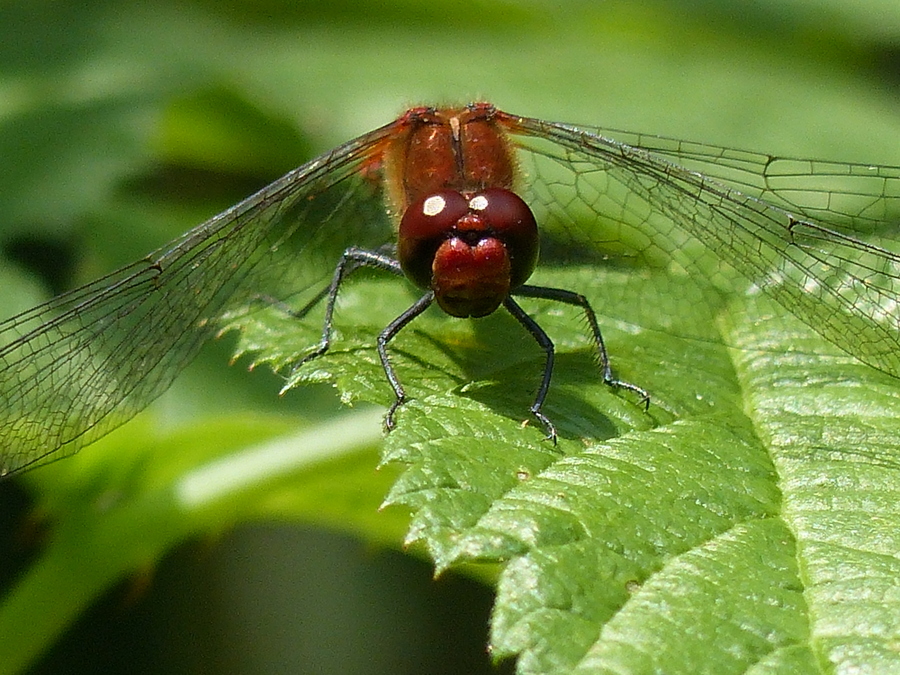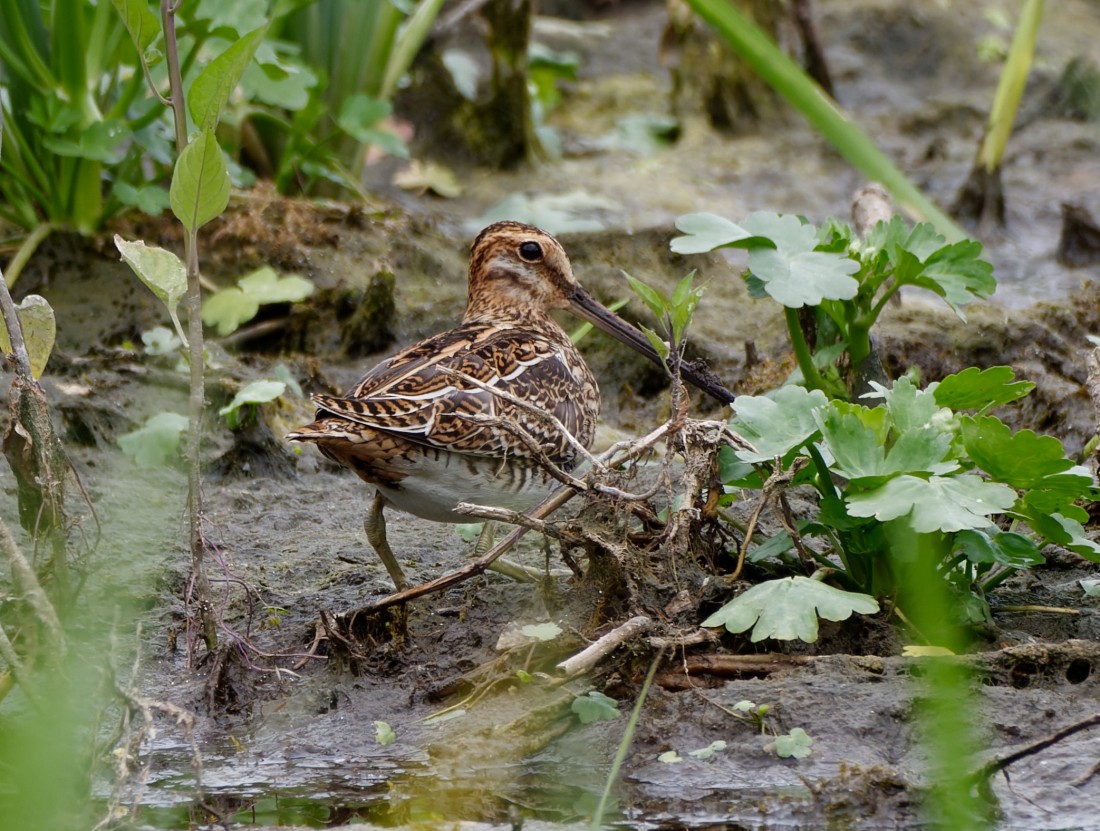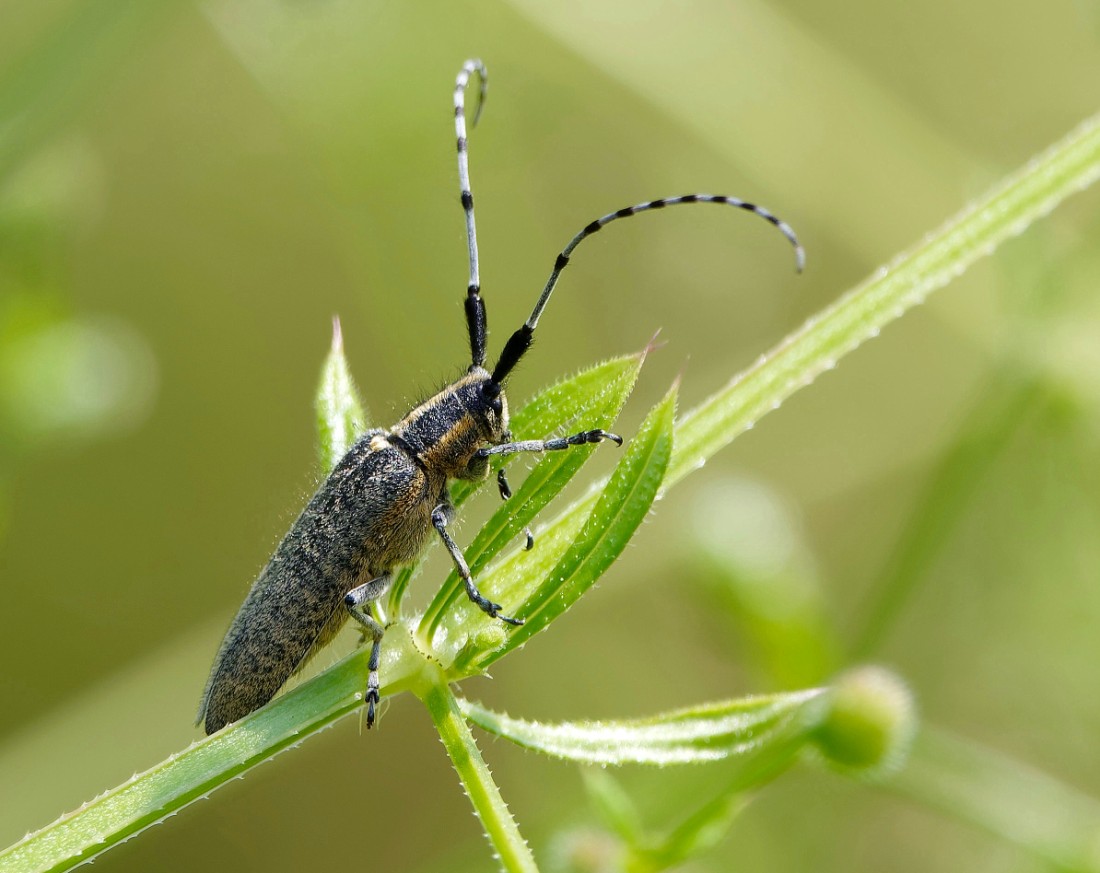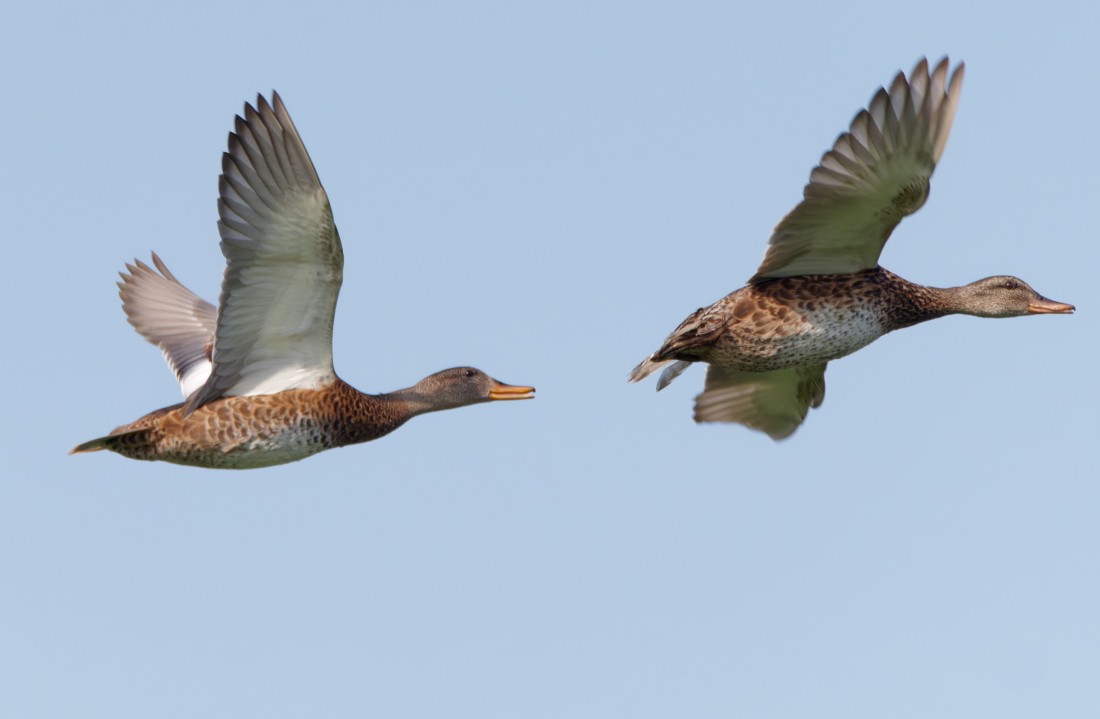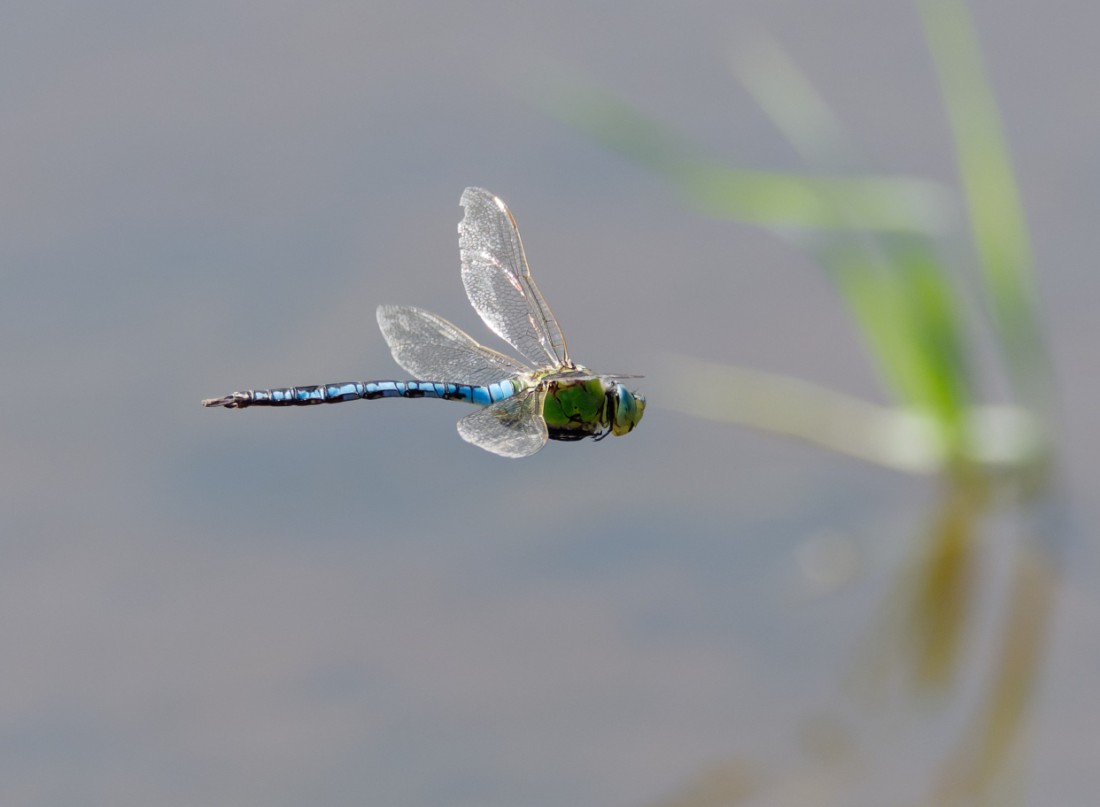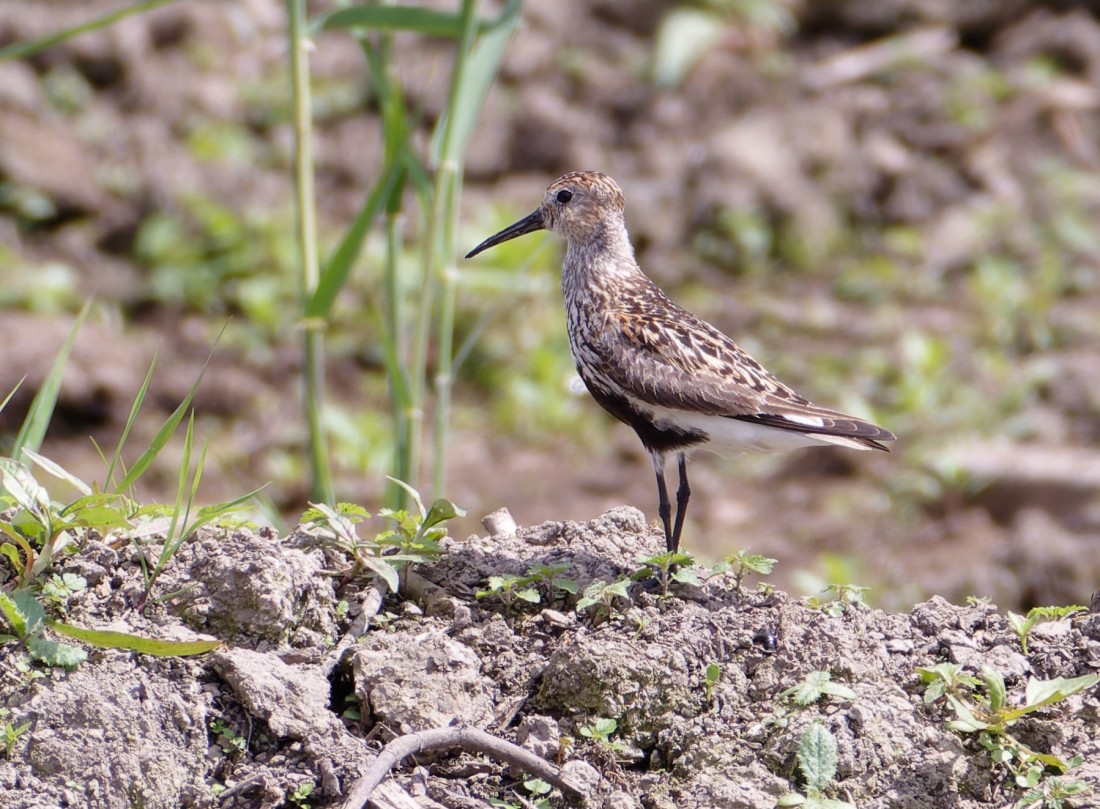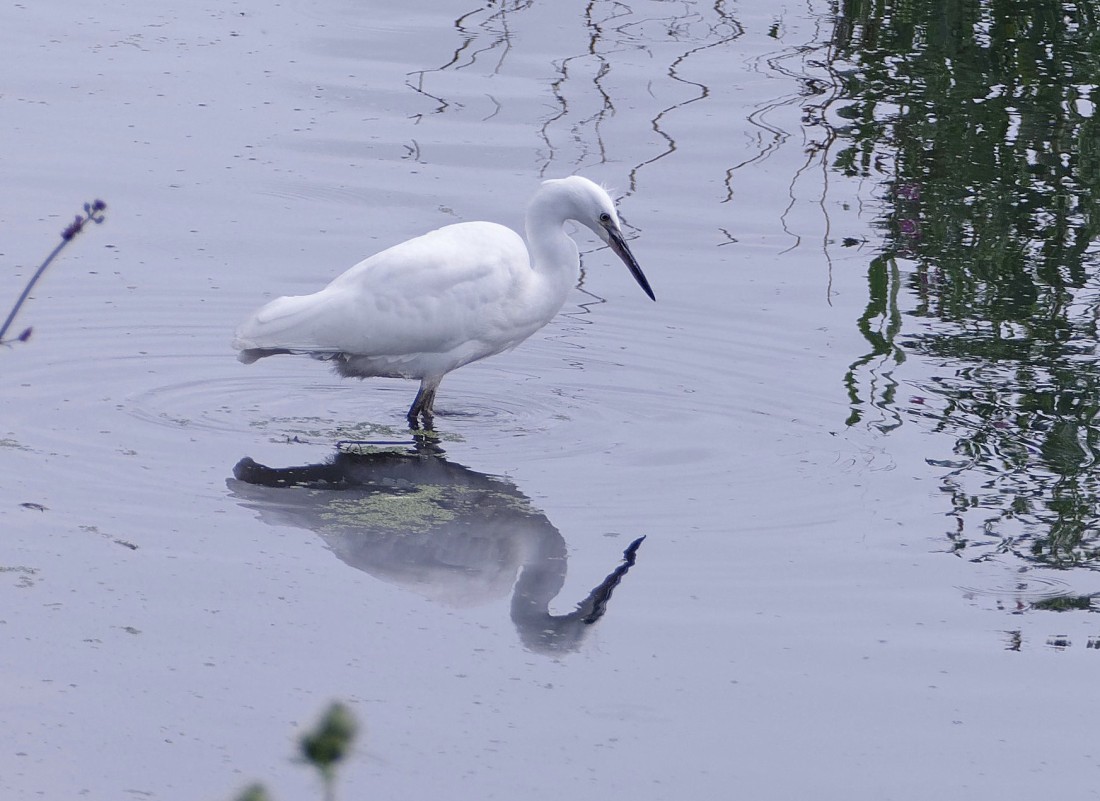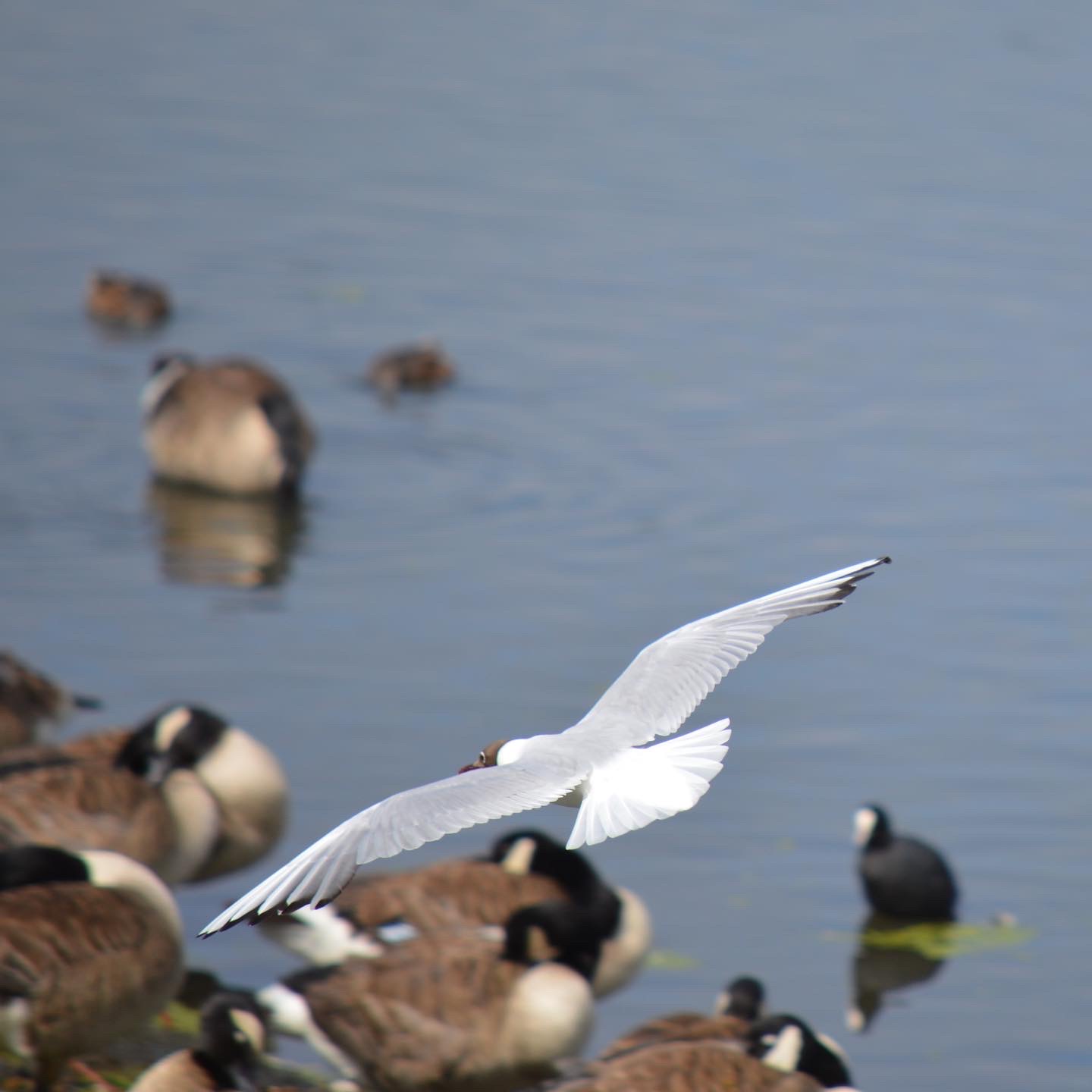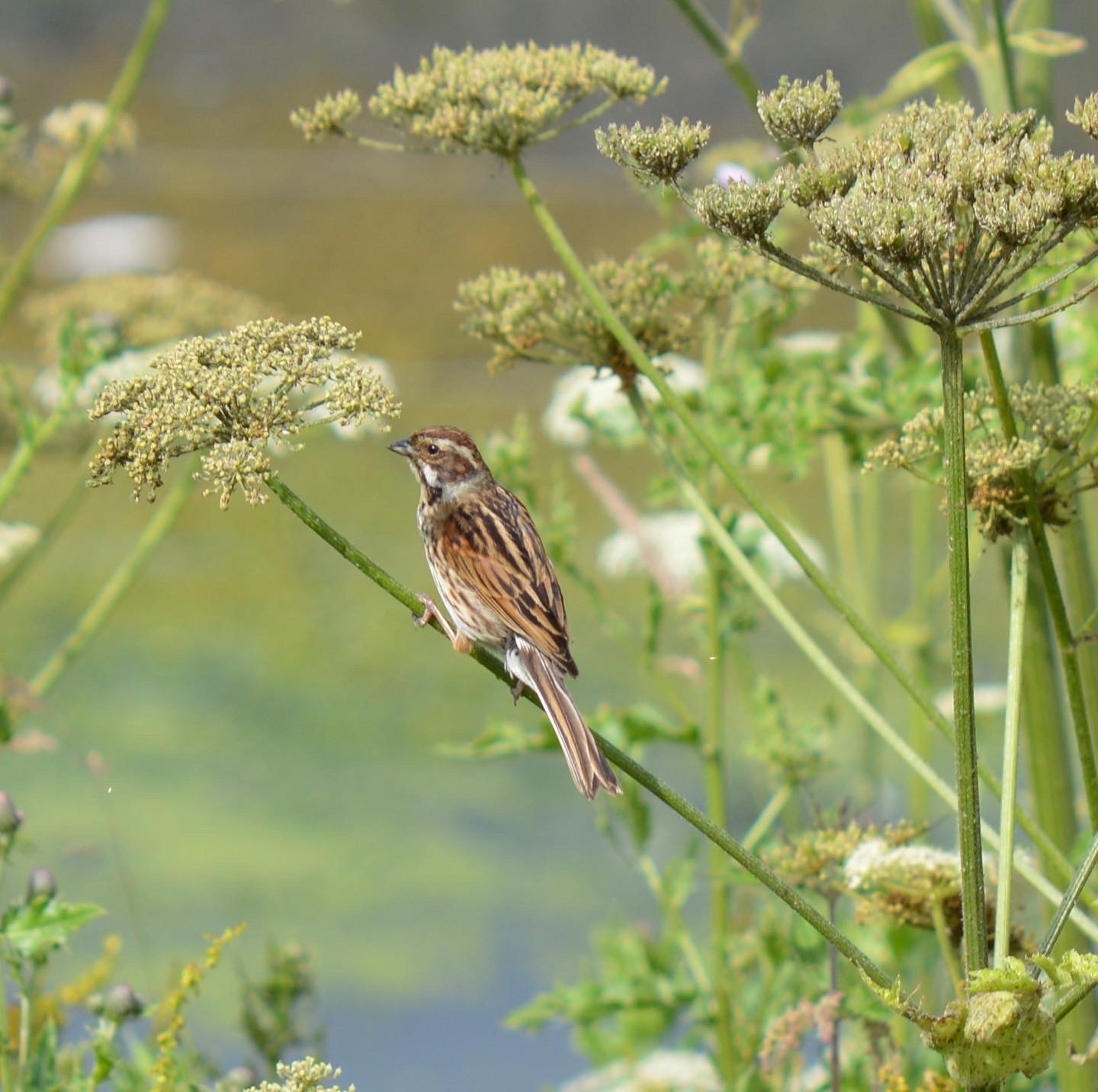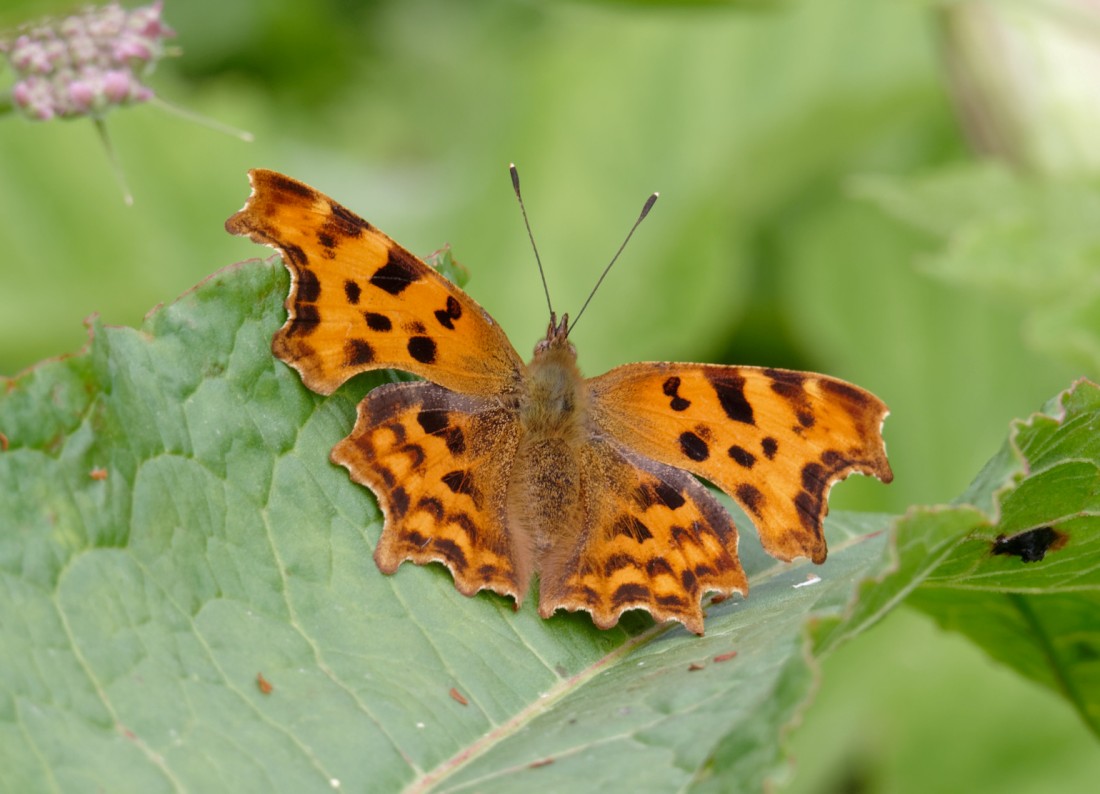Woolston Eyes Monthly Sightings
2021-07-31
Late entry. On No.3 bed 6 full grown independent Black-necked Grebe juveniles and a further juvenile on the Loop of No.4 bed. 83 Coot on the bed and the brood of 10 Shelduck young are near full grown, apart from 2 smaller chicks. It is rare for Shelduck to fledge young at Woolston though they breed annually. At least 4 broods of well grown Tufted Duck and a brood of 5 well grown Pochard.
Submitted by: Brian Martin
2021-07-31
This morning we covered the Reserve from No.4 bed in the west to No.1 bed in the east though, as ever, we made an early start on No.3 bed, where the regular female Marsh Harrier was actively hunting. By the end of the morning we’d managed to locate 4 Green Sandpipers, 4 Little Ringed Plovers (2 adults and 2 juveniles), 1 Curlew, 7 Common Snipe and 100 Lapwings. Perhaps most pleasing, though, was to find 2 juvenile Teal on the No.4 bed wetland. A few pairs of Teal regularly summer with us, though proving breeding has been difficult, so a good find. The adults from our breeding colony of Black-necked Grebes have now left and just 5 of the fledged juveniles now remain and they, too, are likely to be gone within a week or two. Walking back into No.3 bed, a Hobby was circling overhead and from the Morgan Hide we were treated to the sight of 9 Common Terns (4 adults and 5 juveniles) arriving in two groups. Some of them rested briefly on one of the nesting islands before the Marsh harrier sent them on their way. Altogether a thoroughly enjoyable morning. Photo of a Ruddy Darter Cheers David (with Helen Wynn, Alan Warford and Dave Steel)
Submitted by: David Bowman
2021-07-29
On a blustery, overcast morning it threatened rain without ever quite delivering. This is the time of year when fledged young are everywhere though some, like our Black-necked Grebes, are already on the way southwards to their wintering grounds. Migration from further north is also gaining pace, so we keep our eyes peeled for passing waders, or anything else to add variety to our annual species list. Today, it was a Common Tern, a Little Egret, two Green Sandpipers and a couple of Snipe, along with the more regular Kingfisher and Marsh Harrier which were the highlights. The arrival of 170 Lesser Black-Backed Gulls from the local breeding colony, of which 70 were juveniles, was indicative of a moderately successful breeding season for a species which causes us some ambivalence due to the level of predation they bring. Overhead, a 100 Swifts and a few Swallows, Sand Martins and House Martins were feeding actively and it won’t be too long before they too start to feel the migratory urge. If we’re lucky, before then we might see a good-sized Swallow roost forming. Such roosts can sometimes hold upwards of 10,000 birds and pull in hunting Hobbies, Sparrowhawks and Owls, so fingers crossed. Photo of the Little Egret Cheers David (with Dan Owen).
Submitted by: David Bowman
2021-07-26
Another photo of the Ruddy Darter, one of the smallest dragonflies.
Submitted by: Brian Baird
2021-07-26
Several odonata species were active along the south bank of No.3 bed this afternoon, including 15 Red-eyed Damselflies, 24 Common Blue Damselflies, 7 Brown Hawkers, 4 Common Darters and 7 Ruddy Darters.
Photo of a Ruddy Darter.
Submitted by: Brian Baird
2021-07-24
It made a real change, to arrive on No.3 bed to a cool easterly breeze and overcast skies after sweltering all week. Despite the favourable winds there was little sign of migratory movement over the bed, other than 3 Common Snipe which dropped in. There was still a handful of Black-necked Grebes to enjoy, though, along with hundreds of moulting Gadwall and the regular, hunting female Marsh Harrier. We decided to then head to No.4 bed to check out the continuing development of the new wetland, particularly for waders and dragonflies, finding, en route, a stand of 70 of Broad-leaved Helliborines, a relatively scarce orchid. While it was too cool for the dragonflies to be on the wing, we did flush quite a few which were warming up along the path, giving totals of: 15 Common Darters, 7 Black-tailed Skimmers, 1 Brown Hawker and a probable Southern Hawker. It was nice to find yet another new brood of Tufted Ducks on the western cell, while the eastern cell offered four more Common Snipe and 35 Lapwings on the chain of new pools. Photo of one of the Snipe Cheers David (with Helen Wynn, Brian Baird and Brian Martin)
Submitted by: David Bowman
2021-07-22
Another bake-hot morning at Woolston Eyes was mainly taken up with two meetings on No.4 bed, though there was still time to finish with with an hour’s birding from the shade of the Morgan Hide. As well as the odd remaining adult Black-necked Grebe, I managed to locate four fully grown juveniles, which will be ready to leave any day now. Despite the heat, a few things were moving, including a Little Egret, a hunting Marsh Harrier and a Hobby which was catching dragonflies carried up by the thermals. Photo of a Golden-bloomed Grey Long-horned Beetle Cheers David
Submitted by: David Bowman
2021-07-21
Yesterday at Woolston Eyes the temperature was again pushing up towards 30 centigrade by early afternoon, so an early start was in order. This is the time of highest biomass on the Reserve, as both resident and migrant passerines are feeding thousands of young, moulting adult wildfowl are everywhere, along with masses of young, roosts of gulls and Lapwings are growing in size and the insect population is also at its peak. A raft of 630 Gadwall was in front of the Morgan Hide and another 80 flew over to drop into No.3 bed. Then it was a stroll over to No.4 bed, where our contractor is making steady progress towards completion of the new wetland. Although we have been keeping the sluice gates open to reduce the water levels and facilitate the work, there is still a chain of small shallow pools as well as a larger body of water in the westernmost cell. Small numbers of waders are passing through daily and 3 Common Sandpipers, 3 Little Ringed Plovers and one Green Sandpiper were good to see. Additionally, a female Marsh Harrier was actively hunting, despite the attentions of the mobbing gulls. Perhaps most pleasing was to find another 90 Gadwall, taking the flock size to around 800, which is getting ever closer to the qualification for international importance (1,000). Finishing on No.3 bed, the highlight was the female Kestrel with two fledged young near the Footbridge. I’ve watched adults carrying prey towards the south bank of the bed regularly, without pinning down the nest site, so it was good to prove breeding for a second pair this year. Flight photo of Gadwall Cheers David
Submitted by: David Bowman
2021-07-17
A scorching summer morning started well on No.3 bed, with a Little Egret, a female Marsh Harrier and 580 Gadwall in front of the Morgan Hide. With the temperature starting to soar I decided to go looking for waders and dragonflies on No.4 bed before it became too oppressive, while Dave and Helen kept watch from the hide. On the way out of the bed a Weasel dashed across the track, maybe the same one which has regularly been leaving dead Common Shrews along the path? No.4 bed didn’t disappoint, with 2 Yellow Wagtails, 3 Little Ringed Plovers, 1 Common Sandpiper and 3 Green Sandpipers spread around the new wetland, along with another 80 Gadwall and 65 Lapwings. Many dragonfly species are early adopters of newly created wetlands and focussing on just a small area I counted 5 Emperors (1 female), 12 Black-tailed Skimmers (3 females) and 12 Common Darters (including 3 ovi-positing pairs). Back on No.3 bed, it was pleasing to pick out one Red-eyed Damselfly below the footbridge, a scarce species and our first of the year, hopefully with more to come. Photo of an Emperor dragonfly. Cheers David (with Helen Wynn, Dave Steel, David Spencer, Brian Martin and Brian Baird)
Submitted by: David Bowman
2021-07-15
Another beautiful morning, starting in the Morgan Hide, where 4 juvenile Goosanders, which dropped in, were almost certainly the same ones reported earlier, by Greg Baker, as they called at Neumann’s Flash and then Budworth Mere en route to us. The regular female Marsh Harrier also showed well and then, as the day warmed, I shifted focus to the myriad bees, hoverflies and dragonflies around No.3 bed. Brown Hawkers, Common Darters and a smart Leaf-cutter Bee were among the highlights. At this time of year the first returning waders (likely to be failed breeders) start passing through on their way south and No.4 bed is the place to be looking for them. As we start to lower the water level on No.3 bed soon, we should also start to see waders from the Morgan Hide, too. No.4 bed didn’t disappoint, though, with a Common Sandpiper, three Little Ringed Plovers and nicest of all, a very confiding Dunlin which was still in its breeding plumage. As is often the case with newly created wetlands, No.4 bed is also proving to be excellent for dragonflies and highlights were: 2 male Emperors, 11 Black-tailed Skimmers (9 males) and 10 Common Darters (including an ovi-positing pair) all in one small part of the bed. Photo of the Dunlin Cheers David (with David Spencer)
Submitted by: David Bowman
2021-07-13
On a warm mid-summer’s day at Woolston Eyes, you are reminded why the Reserve is so good for breeding and passage passerines, with so many hoverflies, bees, beetles and other insects thronging on the the profusion of wildflowers. As well as being fascinating creatures in their own right, they all make a very nutritious snack for a passing warbler. In front of the Morgan Hide, Garden Warbler, Reed Warbler, Sedge Warbler, Willow Warbler, Chiffchaff and Whitethroat were all feeding at close range on the insect-rich flowers of Common Hogweed. The larger birds also added to the interest, with a Little Egret arriving to feed around the end of the Morgan Hide scrape. while a female Marsh Harrier actually landed on the scrape before launching off on a successful hunt over the reed bed. Two Common Terns dropped in and took exception to the harriers’s presence, mobbing it persistently, while a distant Hobby was hunting close to a group of feeding Swifts. This is also the time of year when our moulting flock of Gadwall reaches a size of national importance (600) and even starts to approach the figure for international importance (1,000). At lunchtime something caused a disturbance in the reeds, bringing all of the Gadwall out of cover enabling a pretty accurate count of 680 to be made, with the prospect of more to come. Record shot of the Little Egret Cheers David (with David Spencer).
Submitted by: David Bowman
2021-07-10
As we started walking on to No.3 bed, it dawned on us that we couldn’t hear the squabbling Black-headed Gulls at the breeding colony. From February, when they first arrive, till July when they depart en masse, they provide a constant and entertaining backdrop and we miss them when they go. This year, instead of vanishing completely, they have simply decamped to the new wetland on No.4 bed, along with the remaining fledged young and it’ll be interesting to see for how long they stay. Our main focus this morning, though, was counting broods on No.3 bed and looking for passage waders on No.4 bed. The highlight was the excellent count of Black-necked Grebes on No.3, with 26 present (10 Adults and 16 young, 7 of which were fully grown). On No.4 there was a good handful of waders, with 4 Green Sandpipers, 3 Little Ringed Plovers and 4 Snipe, along with good numbers of dragonflies, including: 2 Southern Hawkers, 12 Black-tailed Skimmers and 10 Common Darters. Back on No.3 bed, the morning finished with a hunting female Marsh Harrier and another Green Sandpiper, along with 2 Brown Hawker dragonflies. Cheers David (with Helen Wynn, Al Warford, Sue Haddock, Dave Steel, Brian Martin and Brian Baird)
Submitted by: David Bowman
2021-07-03
Black-headed gull coming to land. Photo by Ella taken from the Morgan hide.
Submitted by: Ian Youngs
2021-07-01
The day started well on No.3 bed, with 540 Gadwall in front of the Morgan Hide. This is a flock of national importance and approaching the required 600 to be of international importance. I later found another 20 on No.4 bed and no doubt there were more to be found on other parts of the Reserve. We get these large moulting flocks every June, though still have no idea where they come from! Other nice sightings included a hunting Hobby, a female Marsh harrier and a Green Sandpiper. The fine weather is starting to produce good numbers of butterflies and dragonflies, too, with totals of: 7 Black-tailed Skimmers, 5 Large Skippers, 3 Commas, 2 Speckled Woods, 3 Red Admirals and 20 Small Tortoiseshells. Photo of a Comma Cheers David
Submitted by: David Bowman




